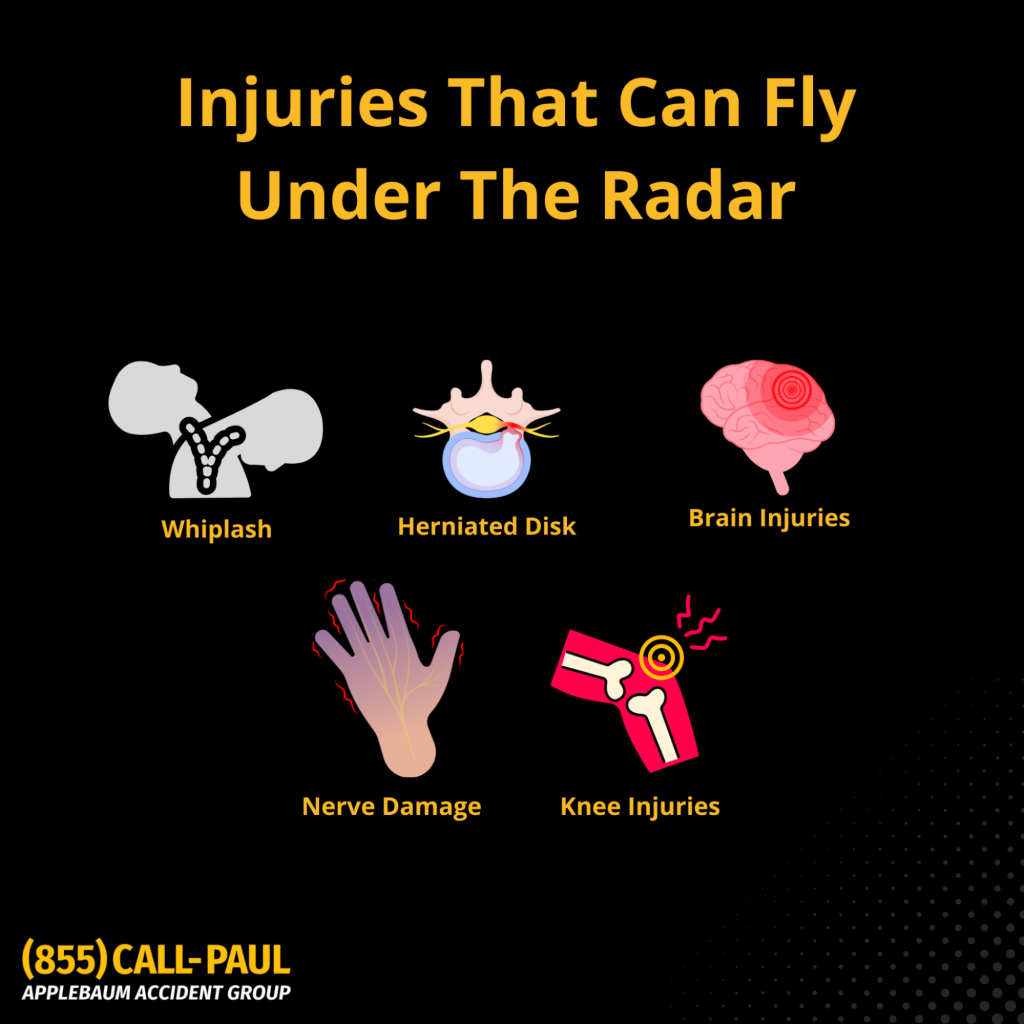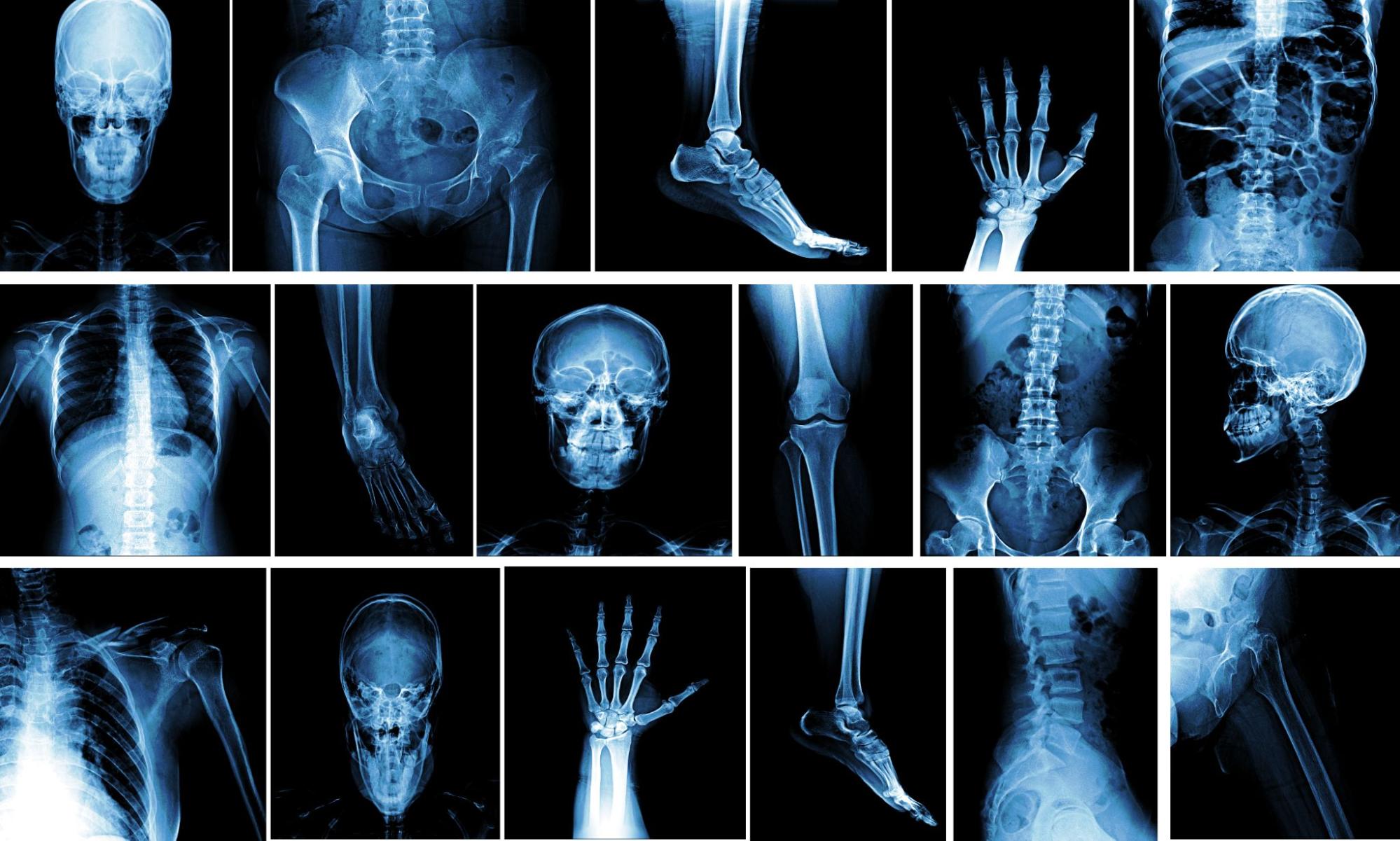An X-ray can look perfectly normal after a car crash and you can still be injured. In Florida, many victims are told they’re “fine” based on imaging alone, only to develop pain, nerve issues, or mobility problems days later. The truth is some of the most serious crash-related injuries don’t show up on an X-ray and waiting to get help could cost you everything.
X-Ray Clear, But Still Hurt? Read This First
- Soft tissue injuries like whiplash won’t appear on X-rays
- Concussions and brain trauma may take days to surface
- Nerve damage and pinched discs often require MRIs or EMGs
- The 14-Day Rule is real: delay care and lose access to PIP benefits
- Insurers love clean scans: they’ll use them to deny your claim
If your pain is real but your scans are “normal,” you’re not alone—and you still have options. This guide will show you what injuries are often missed, how to protect your claim, and what to do if doctors or insurance companies dismiss you.
Injuries That Can Fly Under the Radar

X-rays can’t tell the whole story. Many serious car accident injuries go completely undetected unless doctors use advanced diagnostics, or until symptoms become impossible to ignore.
- Soft Tissue Damage: Whiplash, sprains, and deep muscle bruises are some of the most frequent outcomes of a crash. Yet they leave no trace on an X-ray. Victims often feel sore for a day or two, then worsening stiffness, pain, or limited mobility sets in.
- Herniated Discs and Spinal Compression: If you felt a jolt in your lower back or neck during the collision, it’s possible a disc slipped or became compressed. Herniated discs can pinch nerves and radiate pain down your arms or legs. These injuries require an MRI to diagnose accurately.
- Brain Injuries with No External Impact: Concussions don’t always come with bruises or broken skulls. A minor fender bender can still jostle the brain enough to trigger fatigue, dizziness, memory lapses, or personality changes. These symptoms can be subtle at first and worsen over time.
- Nerve Damage and Brachial Plexus Trauma: Radiating pain, numbness, or tingling in your arms could signal nerve injuries that standard imaging misses. The brachial plexus, an intricate web of nerves near the neck and shoulder, is particularly vulnerable in crashes.
- Occult Fractures: The Breaks You Can’t See: Not all fractures are obvious. Tiny bone cracks might not show up on an initial scan. That’s why orthopedic doctors often repeat imaging after swelling subsides or use CT scans or MRIs to confirm persistent pain.
- Knee Injuries Beyond the Bone: Torn ligaments or cartilage, like an ACL or meniscus tear, won’t show up on an X-ray. These are soft tissue structures, and when they’re damaged, the knee can feel unstable, lock up, or swell. Only advanced imaging like an MRI will catch them.
The Science of Delayed Pain and Injury
Just because you felt fine after the crash doesn’t mean you walked away unscathed. Many accident victims only realize they’re hurt days or even weeks later. That delay is biological.
How Adrenaline Blocks Pain Signals
Immediately after an accident, your body floods with adrenaline and cortisol. These “fight-or-flight” hormones dull pain, sharpen focus, and keep you moving, even if you’re injured. That post-crash clarity often masks symptoms for 24 to 72 hours.
When Whiplash Strikes Days Later
Whiplash is notorious for delayed symptoms. Neck stiffness, headaches, shoulder pain, and dizziness can gradually worsen. This delay often makes victims question whether the crash is even to blame, but medically, it’s a textbook pattern.
Trauma Is More Than Physical
Anxiety, panic attacks, nightmares, or fear of driving are signs of psychological trauma that can emerge long after the collision. These emotional injuries are real and can be just as debilitating as physical pain, though they rarely show up in medical imaging.
Routine Movement Can Make Things Worse
Many people return to normal routines too soon, lifting heavy items, exercising, even hosting gatherings. These activities can inflame hidden injuries. And when pain finally surfaces, skeptics may question the timing.
Florida’s 14-Day Rule, Why It Can Make or Break Your Case

Florida is a no-fault state when it comes to personal injury. That means your own insurance policy covers medical bills and lost wages, up to $10,000, regardless of who caused the crash. But there’s a strict catch: you must seek medical care within 14 days of the accident.
To access Personal Injury Protection (PIP) benefits in Florida, you’re required by law to be evaluated by a qualified medical provider within 14 calendar days of the crash. This includes emergency physicians, chiropractors, and urgent care clinics, but timing is everything.
- Waiting for Symptoms Could Cost You: Florida law doesn’t make exceptions for delayed onset, and insurance adjusters will use that delay to challenge or deny your claim.
- What If You Miss the Deadline: If you wait past the 14-day window, your PIP coverage could be denied entirely. However, not all is lost. A skilled attorney can explore other options to support your case.
- EMC Evaluations vs. Standard Care: To unlock the full $10,000 benefit, your provider must issue an Emergency Medical Condition (EMC) determination. Routine visits may only qualify you for up to $2,500.
- Beyond the X-Ray, Better Imaging and Tools: When your X-ray shows nothing, it’s not always the end of the road. Advanced imaging techniques provide the detail that standard radiology can’t.
- MRI and CT Scans: Magnetic Resonance Imaging Computed Tomography are far more detailed than X-rays. These tools are vital when a patient’s symptoms don’t align with their X-ray results.
- EMG and Nerve Conduction Studies: Electromyography (EMG) and nerve conduction tests identify injuries that affect how your nerves and muscles communicate.
Why Doctors Might Skip These Tests?
Unfortunately, some providers avoid ordering MRIs or EMGs unless you’re showing severe symptoms. Others don’t want to trigger insurance red flags by recommending “unnecessary” imaging. But if you’re in pain, you’re not imagining it. Be your own advocate. Push for the testing you need.
When the X-Ray Is Clear but the Pain Is Real
Getting dismissed by a doctor, or worse, an insurance adjuster, because your X-rays look fine can be frustrating and demoralizing. But you’re not alone, and you have options.
-
Get a Second Opinion
-
Keep a Daily Record
-
Don’t Wait for Things to Worsen
How Insurance Companies Exploit Clean X-Rays
After a Florida car accident, nothing thrills an insurance adjuster more than a clean X-ray. It’s often used as an excuse to undervalue or flat-out deny your injury claim, even if you’re still in pain and struggling to function.
Clean Scan, Denied Claim
Insurance companies routinely argue that if the imaging doesn’t show it, it didn’t happen. They’ll say your symptoms are unrelated to the crash, that you’re exaggerating, or that there’s no medical urgency. And because so many crash injuries are “invisible” to X-rays, this tactic works more often than it should.
The Risk of Signing Too Soon
You may be offered a quick settlement that seems reasonable, especially if the pain hasn’t fully set in yet. But signing that release too early means giving up your right to seek more compensation later. Once symptoms develop, it’s too late to reopen the case.
A Referral Network That Fights Back
When you’re facing dismissive adjusters and skeptical doctors, it’s hard to know where to turn. That’s where Applebaum Accident Group becomes invaluable. We refer injured Floridians to legal and medical professionals who understand that real injuries aren’t always visible, and who know how to prove it anyway.
Just Because It Doesn’t Show, Doesn’t Mean It’s Not Real

The injuries that X-rays miss are the ones most likely to be minimized, questioned, or outright denied. But that doesn’t mean they’re any less real, or any less deserving of care and compensation.
That’s exactly where Applebaum Accident Group steps in.
We don’t just connect you with any lawyer, we guide you to attorneys who believe you. We don’t just recommend doctors, we refer you to providers who know what to look for, how to document it, and how to explain it clearly.





